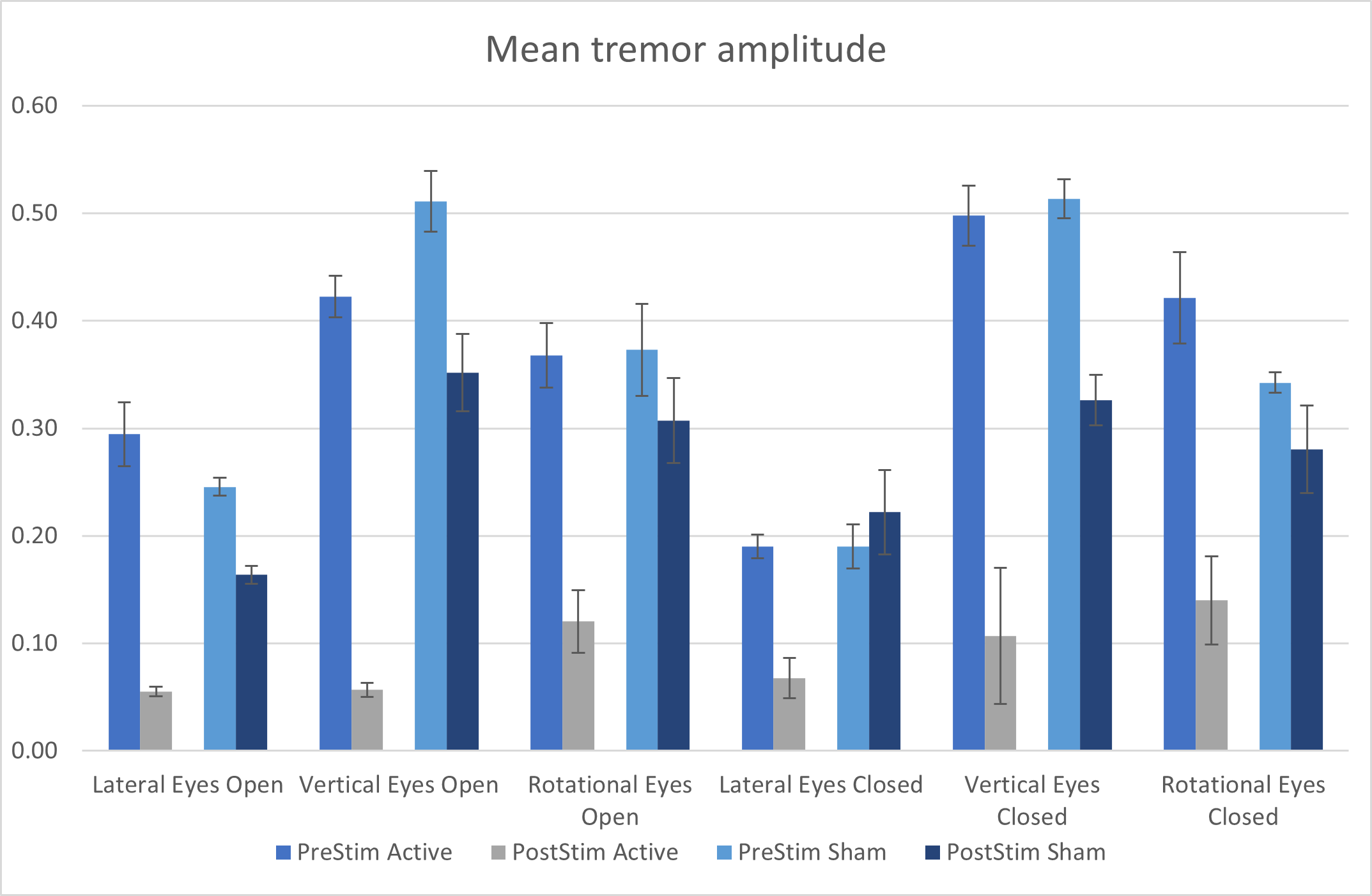Category: Dystonia: Clinical Trials and Therapy
Objective: To demonstrate the efficacy of tPCS on a patient with CD
Background: CD is a common adult-onset dystonia. Abnormal sensorimotor integration and maladaptive plasticity have been proposed as possible mechanisms, and there is no non-invasive way to assess and modify this dysfunctional network. Intramuscular botulinum toxin injection (BoNT-A) is the standard treatment for CD. However, 30% of patients discontinue therapy due to lack of efficacy, side effects and the effect may wear off by week 8. Importantly, injections do not change the abnormal networks, as patients need life-long treatment.
While noninvasive brain stimulation (NIBS) such as transcranial magnetic stimulation and transcranial direct current stimulation has been investigated in CD(1), our case represents the first use of tPCS in patients with CD, in conjunction with standard BoNT-A therapy. In contrast with other NIBS, tPCS modifies neuronal excitability by a combination of tonic and phasic effects, in a portable device.
Method: A patient with idiopathic left torticollis was recruited. The patient has had BoNT-A injection for several years with stable toxin doses and excellent efficacy of toxin injection with early return of dystonic tremor and left torticollis approximately 4 weeks prior to the next injection date.
During these 4 weeks, baseline assessment, including Toronto Western Spasmodic Torticollis Rating Scale(TWSTRS), quantitative EEG and kinematic measurement, were carried out before 20 minutes of tPCS was administered to the patient’s supplementary motor area (SMA). The above assessments were repeated after tPCS stimulation, and the patient was then brought back for sham stimulation 2 weeks later. The patient and examiner were blinded.
Results: Active tPCS stimulation of the SMA for this patient improved TWSTRS score by 6, and kinematic measurement, particularly affecting dystonic tremor. (figure 1) Fast Fourier transform-based spectral power analysis was performed on EEG measurements showing a transitory change in electrical activity after tPCS stimulation. The patient had reported that the effect lasted 3 days after the single dose tPCS stimulation.
Conclusion: tPCS stimulation has shown promise as a noninvasive therapy for patients with CD in conjunction with BoNT-A injections. Further assessment of its benefit through larger study and chronic stimulation is needed.
References: 1. Ganguly J, Murgai A, Sharma S, Aur D, Jog M. Non-invasive Transcranial Electrical Stimulation in Movement Disorders. Frontiers in Neuroscience. 2020.
To cite this abstract in AMA style:
JR. Chai, S. Bansal, D. Aur, O. Samotus, M. Jog. Pilot case on the use of transcranial pulsed current stimulation(tPCS) in a patient with cervical dystonia(CD) [abstract]. Mov Disord. 2022; 37 (suppl 2). https://www.mdsabstracts.org/abstract/pilot-case-on-the-use-of-transcranial-pulsed-current-stimulationtpcs-in-a-patient-with-cervical-dystoniacd/. Accessed April 20, 2025.« Back to 2022 International Congress
MDS Abstracts - https://www.mdsabstracts.org/abstract/pilot-case-on-the-use-of-transcranial-pulsed-current-stimulationtpcs-in-a-patient-with-cervical-dystoniacd/

